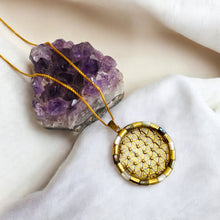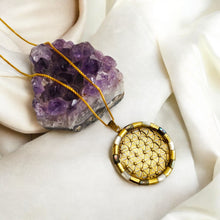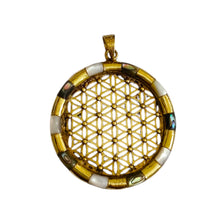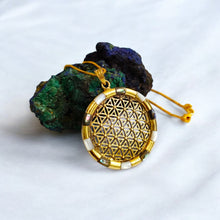
Discover the spiritual elegance of our Gold Large Flower of Life Pendant, a powerful talisman crafted to inspire healing, balance, and divine connection. Handmade with deep intention, this piece is a stunning fusion of ancient symbolism and minimalist beauty, perfect for both men and women.
Materials & Craftsmanship:
Each pendant is skillfully crafted from a premium alloy of 5% Gold and 95% Brass, giving it a rich, vintage-inspired finish. The outer frame is inlaid with luminous mother of pearl and abalone shell, creating a mesmerizing dance of color as light strikes it from every angle.
Symbolism:
The Flower of Life is one of the oldest sacred symbols, believed to represent the cycle of creation and the interconnectedness of all life. Worn as a talisman, it offers protection, spiritual growth, and harmony to its wearer.
Details:
- Fits any chain up to 5mm thickness
- Handmade with love and intention
- Vintage finish for a timeless, authentic look
- Healing energies from sacred geometry and natural materials
Jewelry Care Tips:
To maintain its beauty, avoid exposure to water, perfumes, and harsh chemicals. Gently polish with a soft cloth when needed, and store it in a dry, safe place when not in use.
A Glance at History:
The Flower of Life design dates back thousands of years, found carved into the walls of ancient Egyptian temples like the Osirion at Abydos. Its perfect form and hidden geometric codes have fascinated scholars, healers, and seekers across civilizations, symbolizing the blueprint of creation itself.
Thank you so much for visiting our shop! 🌟 If you have any questions or need assistance, feel free to reach out — we’re always happy to help!



















